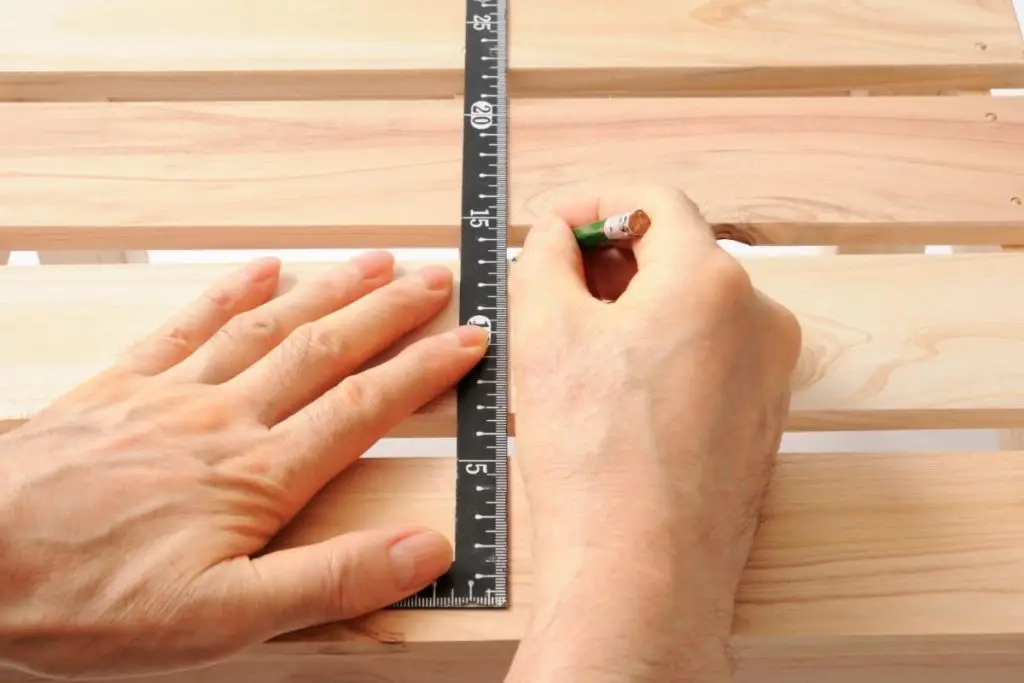Benches are used in our everyday life, and if you are looking to create and build your bench, then you have come to the right place.
Of course, benches can come in all shapes and sizes dependent on the design, but there are of course standard dimensions for your average bench. We are here to tell all the right dimensions, sizes, and more for you to create your bench – including all the explanations and exceptions to certain types of benches as well.
Although there are many sizes you can build your bench, in short, and on average, the standard height of a bench with no backrest is between 18 and 20 inches. If a bench does have a backrest, then the height increases to around 30 to 36 inches.
In terms of depth, for a bench to be comfortable enough to sit on, then it needs to be between 15 and 20 inches. The length of a bench often varies because it always depends on the design of the bench itself and how many people the bench is supposed to be able to seat.
A two-seat bench is about 42 to 52 inches wide, whereas a three-seat bench will be around 53 to 80 inches and a four-seat 81 to 96 inches.

The Standard Size For Benches
Of course, there are several benches on the market, each with its specific measurements, however, a standard 3-seat bench is as follows: 53″ X 15″ X 18″.
This is for a simple bench with no backrest or armrests, etc. – anything that will alter the number of these dimensions. Always remember that every bench is likely to have specific dimensions that will change depending on the design.
The Standard Height For Benches
The measurements we are going to mention are those suitable for the average adult person to be able to sit on a bench comfortably. If you are making a custom bench you can alter the height so that it fits specifically for you, or again it can be altered if the bench is for a child.
The standard bench seating height is between 18 and 20 inches, and this will allow enough room to sit in a comfortable position and have their feet touching the ground. This height of the bench is also the right size for a standard table size of 30 inches.
It is also important to consider anything that you may be adding to the bench that will increase its height. For example, if you are planning on adding a pillow for comfort or aesthetics, then the bench should be cut an inch lower.
This way, the bench will still be at the correct standard height. If you are planning on adding a backrest to your bench, then your measurements are going to be slightly different.
The addition of a backrest will increase your bench to around 30 to 36 inches tall, given that typically the back height for a bench would be 12 to 16 inches above the seat.
The Standard Depth for Benches (How Much Room Do You Need For Sitting)
Much like the above measurements, the following are based on the build of the average adult. For a bench to be comfortable to be sat on, then it must be at least 15 inches deep, up to around 20 inches on average.
As long as the depth of your bench is that deep, then it won’t feel as though you are sitting on the edge of the chair. What makes a seat comfortable is if you can sit on it with full weight distribution. Again, if you are making a bench for a specific person, such as a child, then the depth will be lessened as well as the height.
The Standard Width for Benches (How Wide Should The Bench Be?)
Now that we have covered the fact that the depth and height of a bench ensure how comfortable it is to sit on, we need to cover how wide a bench is. The width of a bench will depend on the number of people you want to be able to sit on the bench, and also the width of the space where your bench is going to go.
Most benches will seat between two and four people, and the width will change depending on that number. The way to work out the average width of a bench is based on the shoulder span of the average adult, plus a foot of personal space on either side.
Here are the average widths of a bench for several seating sizes: seating of two people: between 42 and 52 inches, three people: between 53 and 80 inches, and four people: 81 and 96 inches. Of course, you can always extend the width of your bench, depending on your preferences.
Clearance For Your Bench
The amount of space you are going to need for your bench depends on where it is going to go and its functionality. Outdoor and indoor benches are more than likely going to need a different amount of clearance.
For an outdoor bench, it is much more likely that it will be stationary and placed on a porch or overlooking a view, and because of such you should set them around 36 inches from the walkway. This is because it will give you enough room to sit comfortably and stretch your legs without worrying about being in anyone’s way.
Stationary benches are also used within the home, for which you should still follow the 3-foot clearance rule. An exception to this rule is if you are positioning your bench at your dining room table – instead, people will likely scoot it backwards and forward to sit up and down.
If your bench is moveable then the clearance should be expanded a further 1 foot from the 3-feet rule. This is going to give enough room for people to walk around without blocking anything.
Bench With A Back: Dimension Changes
Sometimes, benches will have a backrest. This will ultimately make the bench more comfortable, but will also end up altering the measurements of the bench. The bench depth should change to roughly 17 to 18 inches, to keep the chair comfortable to sit on.
This will enable people to sit on the bench without it being too deep – if the bench was too deep then they may not be able to bend their legs or have their feet on the ground. The surface of the bench should also slope towards the back slightly.
This is so that the seat is on a backward incline that makes it more comfortable to sit on. To accomplish a sloped bench, then you should cut the back legs of the bench at least one inch shorter than the front. Although you want this slight backward incline, it mustn’t be too steep, otherwise, it may become difficult to sit up again.
Adding Armrests: Measurements

Benches can also be made to have armrests. This is another way to up the level of comfort of your bench, alongside a backrest! Having armrests are the perfect place to rest your elbows as you have a sip on your drink and read a book. Not only this, but they are also particularly helpful when being used to push off as you stand up. This is a feature that may be especially useful for elderly people, as it gives an extra feature for them to grip on for stability. In terms of the measurements when adding armrests, the height and the depth should not change.
The only measurement that may be a little different is the width. This is because you may want to add some extra inches as room for the armrests. This all depends on whether you want the armrests on the inside or outside your bench. In general, armrests should be positioned around 8 inches above the seat of the bench and should be about 4 to 6 inches wide. Alongside this, they should also be at least 1 inch in extension in front of the bench.
Measurements For Other Types Of Benches
There is more than just one type of bench. Thus far, the measurements we have covered are the standard measurements and dimensions for a bench that is supposed to be sat on. Of course, not all benches have that purpose!
There are also utility benches, often used to store items or to gather belongings in an entryway. If you want one of these benches, then the height of such should be a lot lower than a sitting bench. For example, if you want a bench for storing shoes, and to rest on while you tie your shoes, then the bench should be around 12 inches.
At this height, you will be able to bend down comfortably to tie your shoe. If you are looking at a bench used for storage, then they can be a bit taller than around 18 to 20 inches and deeper than 15 to 20 inches. This way, you are still able to use it to sit on, but the primary purpose of the bench is to store things within it.
If you want a bench for any of the above purposes, they can also be narrower than a sitting bench, as that is not their main purpose.
Final Thoughts
Benches can change in size and measurements, depending on what it is going to be used for. If you are looking to create a bench used primarily for sitting, then the above-mentioned dimensions are going to work the best for you.
Of course, you can alter them to fit your specific needs in regard to the space you have, and how much room you want when sitting on the bench, but the above measurements will help you with a place to start.
So, if you are wondering if a bench will fit in your dining room, or you are looking to build one yourself, hopefully, this article has helped you with the correct measurements so that you can find or make a bench that is perfect for you.
- Benjamin Moore Palladian Blue Paint: A Color Review - September 5, 2023
- 10 Of The Prettiest Interior Door Colors - August 29, 2023
- Hale Navy: The Best Navy Paint Color - August 22, 2023

![How To Design A Room Like An Interior Designer [Step By Step] ow To Design A Room Like An Interior Designer [Step By Step]](https://alexanderandpearl.co.uk/wp-content/uploads/2022/02/How-Much-Does-A-Pop-Up-Camper-Weigh-33.jpg)






